In the autumn of 1569, Camillus left the Hospital of St. James in Rome, where he had spent a period of treatment, first as an in-patient and then as an orderly. He appeared to be cured of the sore that had opened in the heel of his right foot for some time and had now healed. Unfortunately, it was not long before it reopened and developed, making him suffer to death. That wound would be the stigmata that, for the rest of his life, would remind him of his youth.
After leaving the hospital, he enlisted in the army of the Venetian Republic, in which he remained until 1573, taking part in various exploits against the Turks, especially in Dalmatia. Dismissed, he managed to enlist in the army of the King of Spain, and for a year wandered here and there, in the ‘Kingdom’ and in Africa.
His main commitment during this period was gambling, which he took to extremes and which completely ruined him, sucking what little money he received from the militia.
In the late autumn of 1574, while in Naples, he was also discharged from the army of Philip II. With a companion, Tiberio di Siena, he travelled to Apulia and arrived, after several stops, at Manfredonia, with the concealed hope of having a chance to enlist in some mercenary company.
On 30 November, driven by necessity, he reduced himself to begging at the door of the city cathedral. A distinguished old man, Antonio di Nicastro, noticed him, took pity on him and offered him work as an apprentice in a factory belonging to the Capuchin Fathers, whose construction he supervised. With little effort, he overcame the hostility and resistance of his companion, who continued on his way, and accepted that modest assignment. He had to, with a couple of donkeys, provide the masons with the necessary stones, bricks, lime and water.
In the early days he felt deeply humiliated and frustrated, finding himself in a situation unworthy of his status. At the age of twenty-four and a half, a dashing young man, a descendant of a noble family, who still bore the marks of his former trade in his clothing, reduced to driving donkeys. Outwardly he might have appeared a rather funny figure; inwardly he was in a tragic condition. It brooded within him a muted rebellion to drop everything and leave. Every act, no matter how benevolent, by the Capuchins, was interpreted with suspicion, even the offer of a bit of cloth from their habit, to shelter from the bitter cold.
After the first few weeks, he began to accept that temporary situation, in his opinion, in the hope of the coming spring and the future return to arms.
When the building of the convent was finished, he was not dismissed, but the Guardian gave him the task of providing for the various needs of the community. The Capuchins had taken a liking to this young man who was more unfortunate than bad, and who showed a certain good will. And, on the other hand, he was not insensitive to their attentions.
On 1 February 1575, the Guardian, Fr. Francesco da Modica, sent him to Castel S. Giovanni – today S. Giovanni rotondo – twelve miles from Manfredonia, to bring certain provisions to the friars and bring back wine in return.
In the evening, the Guardian of that Convent, Fr Angelo, had a long talk with Camillus under a bare pergola of vines. He spoke to him about God and the salvation of the soul, with simplicity and without frills. Knowing the temptations to which young men of his age can be subject, he admonished him to resist evil thoughts and to spit in the devil’s face.
Camillus listened deferentially and, at the end, commended himself to the friar’s prayers.
The next morning, 2 February, the feast of the Purification of the Virgin, a Wednesday, he took the road back to Manfredonia. Riding on his donkey, with two wineskins of wine, wrapped in two saddlebags on his saddlebags, he walked along the lonely, winding road that winds through the ravines of Mount Gargano. He thought back to what the friar had told him and reflected on his past life. The complex of failures, faults, sins, infidelity to promises and vows resurfaced in his conscience. Awareness of his moral wretchedness, of his ingratitude towards God, came alive. A purpose of repentance and renewed life took shape and was consolidated, which was also expressed outwardly in a flood of feelings. He dismounted, or rather leapt from the saddle, fell on his knees in the middle of the road, and, beating his chest, accusing himself a sinner, asked forgiveness, promised penance: “No more world… No more world! He got up with the intention of becoming a Capuchin.
He resumed his journey, inwardly transformed. A new life had begun for him. Since then – as he himself would confess – he was aware that he had no longer committed a sin, neither grave nor slight, deliberate, in a life spent in the constant and permanent tension of love for God and service to his neighbour.
His was a true ‘conversion’ in the biblical meaning, a ‘metanoia’.
According to exegetes, ‘metanoia’ means a change of mind, way of thinking, disposition, orientation to assume a new attitude; and first and foremost a change of evaluation, of judgement, of conviction with regard to contingent reality and the kingdom.
The first step that man must take in this process of conversion is the recognition of his own condition, his own limitation. Conversion is a renunciation, a separation, a detachment, but the most important aspect is a new orientation towards God. The sinner is the one who has turned away from the Lord to beat his own path; conversion requires a retracing of one’s steps, a return to one’s decisions. Repentance, a deploration of the evil done, is not enough; what is needed is an inner transformation, a change of life, a sincere return to God.[1]
This is what happened to Camillus on the road to Manfredonia. In a panoramic view of his entire life, one can see in that decision the milestone that marks a fundamental stage of his existence, the dividing line of two sides, one – to use the Augustinian expression – of self-love to the point of contempt of God and the other of love of God to the point of contempt of self.
APPENDIX: Sources
S.P. Camillus had to preserve until his death an indelible memory of the interior and exterior experience he himself called his ‘conversion’ that totally changed the direction of his life. He recalled it in particular circumstances, and manifested it, in intimacy, to his Religious, who were more his confidants.
Among these, Fr Sanzio Cicatelli above all knew the various details, which he took care to note down, as he did of what he learned from the Founder. He has thus handed down to us the most vivid and meticulous description, both in the “Vita Manoscritta” and in the printed edition, from the very first edition.
In examining the sources concerning the fact, I believe it is good to make a twofold distinction:
I – the description left to us by Cicatelli; II – the testimonies and depositions contained in the Apostolic Processes for the Beatification of the Servant of God.
I – Father Cicatelli gives a minute description of the conversion in chapter X of the “Vita manuscript”. [2]which he then reproduces almost literally, except for some slight changes of expression, in the first edition of his “Vita del P. Camillo de Lellis” (Viterbo 1615).
It is clear that in his narration, he is inspired, as a model, by the conversion of St Paul. “And it came to pass,” we read in the Acts of the Apostles (9:3-5), “that while he (Saul) was on his way and about to approach Damascus, suddenly a light from heaven shone upon him, and as he fell to the ground, he heard a voice. And Cicatelli paraphrases: ‘While he (Camillus) was thus thinking, there is a similitude of another St. Paul, he was suddenly assailed from heaven with a ray of inner light so great as to reflect his miserable state … not being able … to keep himself on his horse, as if struck down by the divine light, he let himself fall to the ground …’.
Despite the substantial truthfulness of the fact, as revealed by other accounts, he embellishes the scene. For example, the words of repentance that he places on Camillus’ lips have been reworked and reported slightly differently in the manuscript and printed life. The firm resolution: ‘No more world, no more world’ can be considered as undoubtedly Camillus’.
In Cicatelli’s disposition to the Apostolic Process in Naples, he repeats what he wrote earlier.
Camillus is called by God to his true knowledge (chap. x)
“Camillus continued for some time in the aforesaid way of life, being now so far from God that he no longer remembered the Vow, nor any other good purpose. In fact, he was so far from these thoughts that, being badly clothed and suffering from great cold in that winter, and having those Fathers wanted to give him, out of compassion, some of that grey cloth that they wear, so that he could make a habit out of it, he never wanted to accept it, for fear that they would not do this to induce him gradually to become a monk. Which he finally accepted, almost to his spite, and against his will, forced and constrained by the cold. In the end, his thought of staying with those religious was only to gain some shield to pass that winter, and to be able to return immediately to the vomit, that is to say, to gambling and war, if it were possible. But God’s thought was very different from his own, for he did not pass through that winter season, which caught up with him, severing the whole fabric of his vain designs, wounding him even so deeply that while he lived he always carried the memory and the signs of it in his heart.
Now that the building was finished, the Guardian began to make use of him in other services, sending him particularly with the same donkeys to carry goods from one convent to another. When the time finally came that His Majesty wished to call him to his true acquaintance in order to carry out a marvellous undertaking through him, it happened that he was once sent to the Convent of San Giovanni, a castle twelve miles away from Manfredonia, to carry a pack of noodles to be exchanged for a lot of wine. And having done so, he was about to return the following morning. In the evening, while he was preparing for the journey, the Guardian of the said convent called Friar Angelo (who was in fact a good Angel for him) called him under a pergola of vines, and because of his actions he seemed to be a young man given to the things of the world, he gave him a brief spiritual reasoning, giving him some reminders against bad temptations, one of which was that if any bad temptation came into his mind, he should immediately spit in the devil’s face, not taking any account of him. Which remedy he then observed always in his life. When he had finished his reasoning, Camillus answered only: Father, pray to God for me, so that He may enlighten me as to what I must do for His service and for the health of my soul. And with this conclusion, the next morning, having heard his mass (and perhaps even taken the blessed candle for that day being the Purification of the Blessed Virgin) he left and set out for Manfredonia. On the way, riding his donkey between two wineskins of wine, which were inside a pair of saddlebags, he was thinking to himself about the things said to him by the Guardian. While he was thinking in this way, behold, like another Saint Paul, he was suddenly seized by a ray of inner light from heaven, so great was his miserable state that, through great contrition, he seemed to have his heart crushed and shattered by grief, and unable to keep on his horseback, as if struck down by the divine light, he let himself fall to the ground in the middle of the road. Where kneeling on a stone he began with unusual pain, and tears, which rained from his eyes, to weep bitterly over his past life. Saying with words interrupted by many sobs: Ah miserable and unhappy me what great blindness was mine not to know my Lord sooner! Why have I not spent my whole life in serving him? Forgive, Lord, forgive this great sinner. Give me at least time for true penance, and to be able to draw as much water from my eyes as will suffice to wash away the stains and ugliness of my sins. When he said these and similar things, he never saw himself satiated with beating himself and punching his chest, not daring to raise his eyes to heaven any more, such was the shame and confusion of looking at him. While he was still weeping in his naive state (after having given infinite thanks to the divine goodness for having waited for him so patiently until that moment), he made a firm resolution never to offend him again, to do bitter penance, and above all to become a Capuchin as soon as possible. He repeatedly said and repeated the following words: “no more world, no more world”. From that day onwards, which was 2 February 1575, the holy year and the third of the Pontificate of Gregory XIII, on Wednesday, the most solemn day of the Purification of the Immaculate Virgin, in the fifth year of his life until the end of his life, he never again recalled or accused his conscience, by the grace of God, of having committed any mortal sin that he had known, nor even voluntary venial sin. Of which he used to say that he would sooner let himself be cut to pieces a thousand times before committing a single one knowingly and voluntarily. This day was then always celebrated by him and was held in great devotion in memory of such a marked gift, calling it the day of his conversion”.[3]
II – IN THE ORDINARY ROMAN PROCESS of Beatification, held from 1618 to 1624[4] , there is no mention of the fact, because it was outside the scope of the interrogations. The witnesses were in fact asked about their knowledge of the Servant of God, his virtues (charity, humility, patience, etc.), his gifts of foreknowledge, the predictions he made, and the miracles attributed to his intercession.
Of the same tenor must have been the depositions made in the Ordinary Trials of Chieti, Naples and Genoa, at least as far as it appears from those depositions that were later taken in the subsequent Apostolic Trials.
III – In the APOSTOLIC PROCESSES of Beatification, which began in 1625, the “Articuli quoad sanctitatem vitae et pro canonizatione Servi Dei Camilli de Lellis, Religionis Clericorum Regularium MinistrantiumInfirmis Fundatoris”[5] were prepared by the postulation, which were sent to the various Episcopal Curias, where the Processes were held, with the remissorial letters.
The second article concerned the life led by Camillus as a young man and the fact of his conversion. It briefly reproduced what was more widely set out in the biography of the Servant of God.
“Item ponunt quod Servus Dei Camillus fuit a parentibus suis pie ac laudabiliter cum Dei timore educatus in patria, sed nihilominus usque 25° suae aetatis annum parum laudabiliter vixit, magnopere ludo deditus, universas substantias dissipando usquequo servitio Cappuccinorum se dedicans anno 1575, particulari Dei impulsu tactus 2 februarii sollemni die Purificationis B. Mariae Virginis cum a Castro Sancti Ioannis in Apulia ad Sipontum usque, inter duas utres equitaret, ut eleemosynam quandam vini pro ipsis Patribus Cappuccinis, quibus tunc serviebat, recuperare, et pia monita de turpitudine peccati, eiusque fuga capienda a Custode Coenobii dictorum Cappuccinorum accepta, animo pervolveret, cum esset in loco campestri, repente divini luminis sagitta intrinsece percussus, veluta alter Apostolus, equo decidens, mediaque in via super lapidem genuflexsus, cordi dolore, lachrymas abunde profundens suspiria et singultus quamplurimos emittens, pectus suum durissime, ob paenitentiam, saepissime percutiens, anteactae vitae suae peccata amare flevit, mundo pluries renunciavit ac Religionem ingrediendi votum emisit, quod fuit et est verum et his fuit, erat et est publica vox et fama palam”[6]
Of 44 of our Religious who gave evidence in the Apostolic Processes held in Rome, Naples, Chieti, Genoa, Mantua, Bologna and Florence, several gloss over all the first articles of the interrogation, in order to linger longer on the testimony of virtues; some leave out the deposition on this second article; one, Fr. Prospero Voltabio, confesses his ignorance in this matter ̎respondit nescire̎[7] . Eight explicitly claim to have heard of the fact from the Founder himself and dwell on this or that detail, along the lines indicated by the same article. No new details emerge from these dispositions, but the veracity of the fact and its decisive turning point in the direction of the Saint’s life is confirmed.
- A) Roman Trial. – Of nine of our religious who gave evidence at this trial, only one, Fr Cesare Simonio, testified on the second item. He (1572 – 1645)[8] , had entered the Order in Naples in 1590, and had been familiar with the Servant of God for a long time, having spent much time in Rome. He was zealous in caring for the dying in private homes and enjoyed a certain following and wide esteem and consideration. He had already given evidence in the Roman Ordinary Trial on 28 August 1618. His testimony on that occasion had been livelier than on this one, and more detailed. On the fact of the conversion, responding to the second article, he declared:
“I found myself present between the octave of his profession and that of all the other Fathers at the hands of Monsignor Albero Archbishop of Ragusa which was the year 1591, that the said Fr. Camillus, to the greater confession and glory of God, recounted that having played with what he had, or rather, the same cloths and sword, he took himself to the service of the Capuchins on the occasion that a friend of his was working on a building and was staying there to spend his money; where it happened that, leaving a place to go to Manfredonia on horseback, he was touched by an inner contrition and by a knowledge of himself in such a way that, abandoned by his strength, he fell from his horse; he then made the resolution to become a religious, as I have also heard from the aforementioned Fathers named as his companions”.[9]
- B) At the Neapolitan Apostolic Trial, out of 18 of our Religious who gave evidence, five testified to this fact.
- – Brother Horace Porgiano (1535 – 1629)[10] . He had entered the Congregation in 1585, and was a member of the First General Chapter, ̎tamquam ex primis fundatoribus̎ although not elected. He was very dear to the Founder because of his dedication to the sick and his assiduous care. And he reciprocated his love, because he was convinced that there was no ̎mother who loved her children as much as Camillus loved his poor and dear infirm̎. He was 90 years old and blind for 5, when he made his deposition at the sittings of 3,5 and 10 September 1625, and recalled what Camillus had confided to him ̎familiarly̎ about himself and his life.
“The said Fr. Camillo has told me many times that his conversion to God was in Manfredonia, going to serve a Capuchin convent for the construction and other services of the convent, and he did this with the intention of becoming Capuchin, and once one of those old Fathers exhorted him against sin, and a change of life, and the said Father told me that they were going to serve the said convent, on the way he was ruminating and thinking about those words that the Capuchin Father had said to him, and there came such contrition for past sins, that they made the decision to change their life and become Capuchins, promising it to God with a vow and this was said by said Father to me familiarly recounting his past things and this has been many times, and at this there were present some times many of our Fathers, which at the present time I do not remember; et hoc est verum, etc.” [11]
- – Father Pietro Paolo Bossi (1577-1641)[12] had entered the Order in 1595. He had proposed several times to leave and had been turned away from it – as he himself confesses in his deposition – by Fr Camillus. He had been Prefect of some houses, Mantua, Genoa, Sessa, Bucchianico. He had been in Naples since 1622. In his deposition he dwells above all on his personal facts.
On the second article it states:
“I have heard through the mouth of our Father Camillo, who in his spiritual exercises said that on the day of the Purification of Our Lord (sic!), he had received knowledge of his miserable state and desire to give himself to do penance for his past bad life, that in order to weep for his sins, he became Capuchin but because of a wound on his leg he left Capuchin… And he said this in every place that I have known him, as in Rome, in Genoa, in Milan, in this city and other places, to all our Fathers; et hoc est verum publicum notum”.[13]
- – Fr. Cromazio De Martino (1570-1650),[14] from Naples, who entered the Order in 1595, had been General Consultor from 1599 to 1602 and had exercised the prefecture of some Houses. His deposition made on 27 October 1625 is as follows:
“From the same Father Camillus, I understand that in the time of his youth, he lived in great fear of God, giving himself over to gambling, and was forced to sell even his shirt for gambling, although he had been well educated from the beginning by his relatives; As he had no other way of gambling, he entered the service of the Capuchin Fathers at Manfredonia, where, one day, on his way to the service of the Capuchin Fathers, he was miraculously enlightened by God to convert to his service, in which place kneeling on the ground, shedding many tears and sighs, he made a resolution to change his life, from which time onwards I understood from the said Father that the conscience of having offended his divine Majesty neither mortally nor voluntarily venialy did not bother him; at the same time making a vow to become a Religious, and all this Father Camillus not only told me but also the aforementioned[15] several times; et hoc est verum, publicum, notum, publica vox et fama”.[16]
- – Father Cesare Bonino (1568-1631),[17] from Turin, who entered the Order in 1592, was twice General Consultor (1596-1599; 1602-1608), Provincial of Milan (1609-1612; 1616-1618) and of Sicily (1613-1615). He was one of the most prominent Religious in the Institute, known for his realism and balance, filially devoted to the Founder. His deposition expresses his personality:
“I remember that Fr. I remember that Fr. Camillus often told me with sorrow that when he was in his century he was very inclined to gambling, but he never remembered having blasphemed anything, as gamblers are wont to do, and for this he praised the Lord God, and moreover he told me that having returned from the war, he was reduced to such a necessity that he had to go to serve at a Capuchin factory in Manfredonia, where one day he brought a pack of wine with wineskins, he too was riding a horse, On the way there came such a compunction and sorrow for his past sins, that when he dismounted from his horse he knelt on the ground weeping bitterly over his past life and vowed to become a Religious and this is what Father Camillo told me several times when he told me about his past life, and there were other Fathers present at this event, who at the present time I do not remember who they are, if it is well known among us and this is what Father Camillo told me several times at different times and places; et hoc est verum, publicum[18]
- – Fr. Sanzio Cicatelli (1670-1627),[19] from Naples, who entered the Order in 1589, was among the first solemnly professed in 1591. He had received several posts including that of General Prefect (1619-1625). Diligent first biographer of the Servant of God, he confirms what he has already written in his widely circulated deposition:
“I know that in his childhood Father Camillus was brought up by his father and mother in the fear of God and with good morals, but when he arrived in about the 19th year he began to go around the world as a soldier and serving various princes, such as the Republic of Venice and the Catholic King Philip II, passing various and different dangers by sea and land…He continued in the aforesaid life until the year 1575, when forced by need for having lost everything, he was reduced to Manfredonia to seek alms with hat in hand, and to serve a factory of the Capuchin Fathers, where having once been sent to the Castel di S. Giovanni to take an alms. Giovanni to take an alms, which was a pack of wine, while he was returning to Manfredonia riding his donkey between two wineskins of wine, behold that like another S. Paul was suddenly assailed from heaven with such a great inner light of his miserable state and with such an intimate sorrow for his past sins that it seemed to him that his heart was all crushed by grief, So he got down on the ground on a stone in the middle of the road and wept bitterly over the whole of his past life, beating his chest hard, seeking forgiveness from God, and making a firm resolution never to offend Him again, to do bitter penance, and to fulfil as soon as possible his vow to become a Capuchin, saying and repeating these words several times no more world, no more world; from which day it was 2 Febr. 1575, on Wednesday, the solemn day of the Purification of the Ever-Virgin Mary, in the 25th year of his life, he repeatedly said on various occasions that, by the grace of God, he never again remembered having committed a mortal sin willingly and knowingly, saying that God had given him such a great hatred of sin that he would have suffered a thousand deaths before he would have committed one, however small, I know all this from having heard it several times and on different occasions from this servant of God Camillus, always confounding himself of the great patience God had with him, in waiting so long for him to do penance, and this he sometimes told me presently to others, that at present I do not remember, except for Father Alessandro Gallo, who is dead; et hoc est verum, publicum”[20]
- C) Genoa Trial. – Six of our Religious gave evidence at it. Of these only one, Fr Lucantonio Catalano replied to the second article.
Fr Catalano[21] from Galatina (Lecce), who entered the Congregation in 1587, was one of the first 25 solemnly professed in 1591. An extrovert and ardent character, he had travelled from one end of the peninsula to the other, through all the houses of the Order. Very devoted to the Founder, he had carefully preserved four letters addressed to him. From 1620 he had been destined for Genoa, where he stayed until his death. Quite a show-off, at the Trial he declared with… modesty: ‘There is no one who knows as much about the Founder as I do’. His deposition is very diffuse, sometimes even verbose:
“I have heard many times from the said Father Camillus, and from many others in his homeland, that he was brought up well by his mother, trying to give him much virtue, however at the end of 10 or 12 years of his age he left school and lived not very laudably, having given himself much to gambling, doing many things, dissipating all his wealth until the year he was 25 years old, at which time, having been several times at war and having suffered many of life’s pains during the war, and having played and his clothes and his shirt, he covered his flesh with some rags, he was reduced to begging alms above the gate of Manfredonia as a soldier badly treated and returned from the war, and in that misery he agreed to serve the Capuchin Fathers in the factory, who out of charity wished to cover him with their bread, which he did not wish to accept, fearing that they would not make him a Capuchin, and at that time he was given a warning by the Capuchin Guardian, demonstrating the ugliness of sin and how important it was to resist temptation, he composed himself very particularly, going by road from Castel S. Giovanni in Puglia as far as Siponto. Giovanni in Apulia as far as Siponto in the midst of two skins of wine that had been given him by alms for the suffrage of the Capuchins, arriving in a large plain near a large rock, called by his horse, kneeling over a rock with great pain in his heart shedding many tears and sighs, beating his breast with great fervour, having great sorrow for his past sins, he renounced the world several times and made a vow to enter religion, and this is true that I have heard before from him and many of his companions and from some Capuchin fathers, and so it is public rumour and fame”.[22]
- D) Bologna Trial. – In Bologna, among other Religious, Frediano Pieri, Superior General at the time (1576-1648) deposed[23] . His testimony is, from the aspect that concerns us, rather curious. In fact, he replies to the second article, recalling Camillus’ not good life and is silent on the fact of his conversion. Probably, at least vie is to suppose, that not having heard of it directly from the Founder, he honestly preferred to avoid any statement on the subject:
“I have heard it said that Father Camillo Lelli (sic!) was a great sinner and devoted to many vices while he was in his century, and this is also written in his life, and in addition to this I have heard it said by him himself that he was a great sinner and that he was a firebrand of Hell, and that he was a Capuchin, and that he was a Capuchin is written in his life, and I am not informed otherwise”.[24]
- E) Trial of Mantua. – In this trial, the Prefect of the House, Father Domenico De Martino (1574-1631), a Neapolitan, testified.[25] He entered the Order in 1595 and had been Prefect of several Houses. In 1624, he had directed the work of assisting the plague victims in Palermo and had written a ‘Relatione’. In his deposition, responding to Article 2, he confines himself to confirming, in a generic form, what was requested:
“Cuanto si contiene in questo Capitolo non solo lo ho sentito raccontare comunemente da molte persone, et in particolare da un Capuccino vecchio, di cui non ricordo il nome, ma dal Padre Camillo stesso molti volte, quando vuole essagerare delle misericordie di Dio e delle proprie colpe once.[26]
- Pietro Sannazzaro, in C.I.C. 1975 n.59 – Year V, pp. 11-24
[1] Cf. Ortensio Da Spinetoli, Matteo, Assisi 1971, pp. 67-68.
[2] AGMI 116, f. 28-29.
[3] Ibid.
[4] AGMI 2049
[5] These articles were printed in a booklet in Naples (ex tipographia Aegidi Longo, 1625) AGMI 33, 3. They also appear at the beginning of various Apostolic Processes (AGMI 1;12;2051).
[6] AGMI 1, f. 9-9v.
[7] AGMI 1, f. 123.
[8] Mohr., Catal. Relig. no. 61
[9] AGMI 2047, f. 72v.
[10] Mohr., Catal. Relig. no. 44
[11] AGMI 1, f. 91-91v.
[12] Mohr., Catal. Relig. no. 157
[13] AGMI 1, f. 149v.
[14] Mohr., Catal. Relig. no. 155
[15] Pardi Alessandro Gallo, Sanzio Cicatelli and Ottaviano Variani, whom he mentioned earlier.
[16] AGMI 1, f. 177v.
[17] Mohr., Catal. Relig. no. 86
[18] AGMI 1, f. 210-211.
[19] Mohr., Catal. Relig. no. 17
[20] AGMI 1, f. 223-224.
[21] Mohr., Catal. Relig. no. 11
[22] AGMI 12, f. 34-34v.
[23] Mohr., Catal. Relig. no. 120
[24] AGMI 15, f. 49.
[25] Mohr., Catal. Relig. no. 71
[26] AGMI 2051, f. 32-32v.



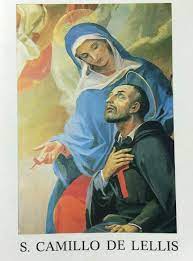
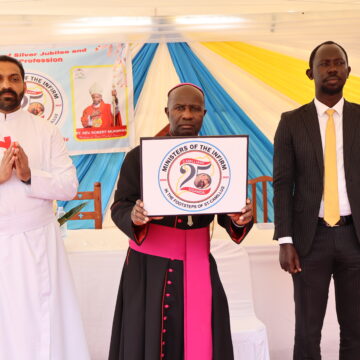
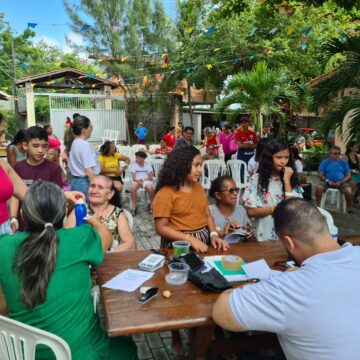

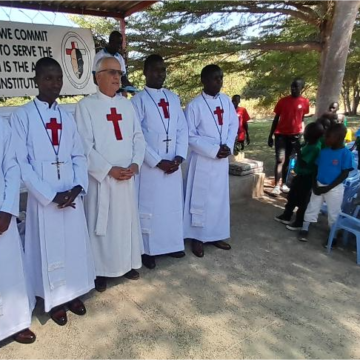
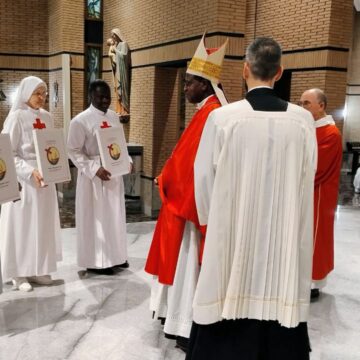

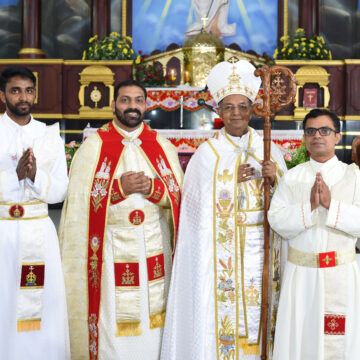
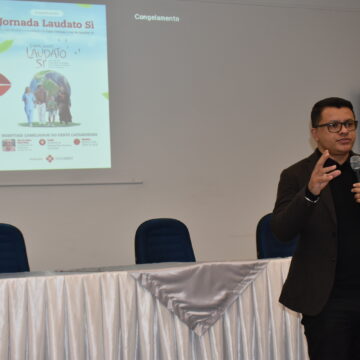


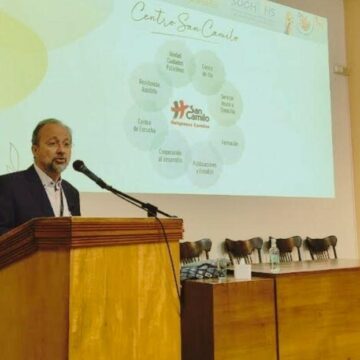

Camillians on Facebook
Camillians on Twitter
Camillians on Instagram